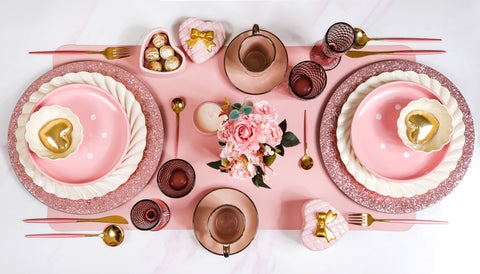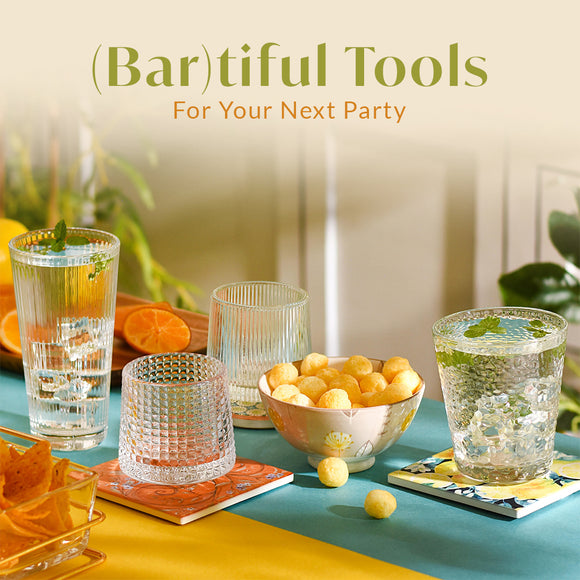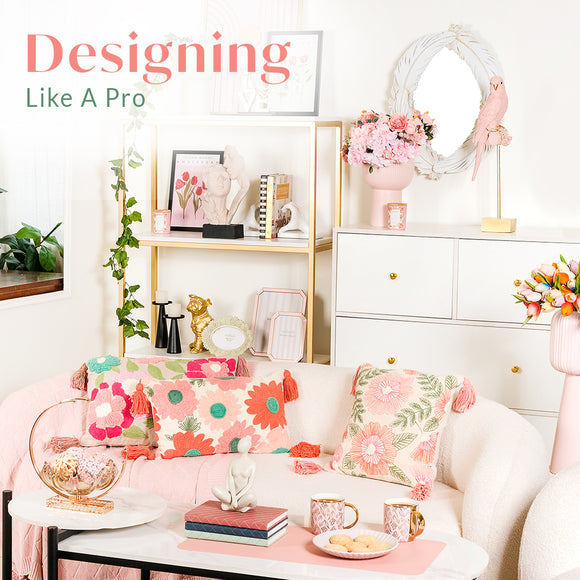Embark on a journey to unlock the secrets of the dining table with our comprehensive guide to understanding cutlery. Beyond mere utensils, cutlery embodies an art form that elevates dining experiences from mundane to magnificent.
Join us as we delve into the intricacies of forks, knives, and spoons, exploring their roles in various cuisines and cultures. Whether you're a seasoned foodie or a curious novice, this guide promises to enrich your understanding and appreciation of the timeless craft of cutlery.
Visit: https://nestasia.in/collections/table-mats
The Basics Of Cutlery
Cutlery forms the cornerstone of fine dining, transcending mere utensils to become instruments of culinary artistry. Forks, knives, and spoons comprise the essential tools of the trade, each serving a distinct purpose in the gastronomic journey. Understanding the basics involves recognising the role of each utensil: forks for spearing and lifting food, knives for cutting and slicing, and spoons for scooping and ladling.
Moreover, mastering the art of cutlery extends beyond functionality to etiquette, with proper handling and usage enhancing the dining experience. Whether dining in casual settings or at formal affairs, familiarity with cutlery basics empowers individuals to navigate the table with confidence and finesse. Embrace the simplicity and elegance of these timeless implements, for they are the silent orchestrators of culinary delight and social communion.
Types Of Cutlery
1. Formal Sets
Typically include a comprehensive selection of utensils for formal dining occasions, such as elaborate dinner parties or weddings. These sets often feature multiple forks, knives, and spoons tailored to each course of a multi-course meal.
Also visit: https://nestasia.in/collections/cutlery-holders
2. Casual Sets
Designed for everyday use in more relaxed dining settings, casual cutlery sets may include a basic selection of utensils suited for general mealtime needs. These sets are versatile and practical, making them ideal for family dinners or informal gatherings with friends.
3. Speciality Cutlery
Catering to specific culinary preferences or cultural traditions, speciality cutlery sets may include unique utensils tailored to particular cuisines or serving styles. Examples include sushi knives for Japanese cuisine, seafood forks for shellfish, and cheese knives for cheese platters. These specialised utensils enhance the dining experience by providing the right tool for the job, allowing individuals to enjoy their favourite foods with ease and authenticity.
Materials Used In Cutlery
1. Stainless Steel
Renowned for its durability, resistance to corrosion, and affordability, stainless steel is a popular choice for cutlery. It maintains its sleek appearance even with regular use and washing, making it suitable for everyday use in various settings.
2. Silver
Silver cutlery exudes elegance and sophistication and is often favoured for formal dining occasions. While prized for its lustrous finish and timeless appeal, silver requires more maintenance to prevent tarnishing and may be less practical for daily use.
Also visit: https://nestasia.in/collections/napkins
3. Titanium
Known for its lightweight yet robust properties, titanium cutlery offers durability without adding significant weight. It is an excellent choice for outdoor dining, camping, or travel, where portability and durability are paramount.
Understanding the characteristics of each material helps individuals select cutlery that aligns with their aesthetic preferences, usage habits, and maintenance preferences.
Cutlery Placements
Cutlery placements, an essential aspect of dining etiquette, orchestrate the visual symphony of a table setting, guiding diners through the culinary journey with finesse. In formal settings, meticulous arrangements dictate the placement of utensils, with forks to the left and knives and spoons to the right of the plate. Each utensil's position signifies its intended use, from salad forks on the outer left to dessert spoons on the outer right.
Speciality utensils, such as fish knives or butter spreaders, may accompany the main set as needed. In casual settings, simplicity reigns, with only essential utensils provided for the meal. Regardless of the formality, proper cutlery placements serve as elegant visual cues, enhancing the dining experience and ensuring that each course is savoured with grace and ease.
Also visit: https://nestasia.in/collections/wine-glasses
Proper Usage & Etiquette
Proper etiquette dictates not only the correct use of cutlery but also courteous behaviour at the table. Basic guidelines include holding utensils correctly, using them in the appropriate sequence, and refraining from placing used cutlery directly on the table.
In formal dining settings, additional rules may apply, such as signalling when finished with a course by placing utensils in a specific position. Adhering to these practices demonstrates respect for both the meal and fellow diners, fostering an atmosphere of refinement and camaraderie.
Caring For Your Cutlery
Proper care and maintenance are essential for preserving the quality and longevity of cutlery. Regular cleaning, preferably by hand with mild soap and water, prevents buildup and maintains the utensils' appearance. Drying cutlery promptly after washing helps prevent water spots and corrosion.
Storing cutlery in a dry, well-ventilated environment, such as a drawer with dividers or a dedicated cutlery tray, minimises the risk of damage and ensures easy access when needed. Additionally, periodic polishing and inspection allow individuals to address any signs of wear or damage promptly, prolonging the lifespan of their cutlery investment.
Also visit: https://nestasia.in/collections/table-runners
Cultural & Historical Significance
Cutlery customs vary widely across cultures and time periods, reflecting diverse culinary traditions and societal norms. For example, the use of chopsticks in Asian cultures contrasts with the knife-and-fork approach common in Western dining.
Historically, elaborate silverware designs and dining rituals symbolised wealth and social status, while simpler utensils were more practical for everyday use. Exploring these cultural and historical influences provides insight into the broader context of cutlery's role in human civilisation, enriching our appreciation for this everyday essential.
Modern Trends & Innovations
In response to evolving lifestyles and consumer preferences, the cutlery industry continues to innovate with new designs, materials, and functionalities. Contemporary trends prioritise functionality, ergonomics, and sustainability, with an emphasis on versatile, multi-purpose utensils suitable for diverse culinary needs.
Eco-friendly alternatives, such as biodegradable and reusable options, appeal to environmentally conscious consumers seeking to reduce their carbon footprint. Advancements in manufacturing technologies also enable the creation of intricately designed and precisely engineered cutlery sets that combine aesthetic appeal with practical utility. By staying informed about these modern trends and innovations, you can make informed choices when selecting cutlery that aligns with your values and lifestyle.
Also visit: https://nestasia.in/collections/bowls-main-menu
Conclusion
From the elegance of formal dining to the practicality of everyday meals, mastering the art of cutlery enhances not only the act of eating but also the overall dining experience. With newfound knowledge and appreciation, may you approach the table with confidence and grace, savouring each bite with the reverence it deserves. Cheers to a lifetime of culinary delights, guided by the wisdom of cutlery mastery.






























